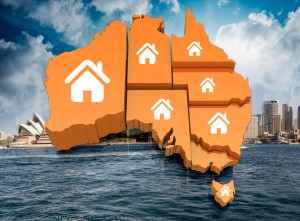Want to know what’s happening in property around Australia?
Well… today’s data intensive Property Insiders monthly market update will help you understand what’s going on.
Of course it’s already May, which means a quarter of 2020 has already gone, and what a tumultuous year it’s been in property. 
What started as a year with great prospects for our housing market has so far been the most “intersting” years in my 45 years involvement in real estate.
One of the major differences today from when I first got involved in real estate is the vast amount of information and data available to the average property investor today.
In the old days property investment used to be a sort of “secret men’s club” with information only coming out quarterly or annually .
The problem today is sifting through and analysing the data, understanding which bits are relevant and which are out of date before we get them.
It’s also important to critically evaluate the vast amount of property commentary we are receiving, as some of it is misguided and others laced with vested interests.
So to try and make some sense of what’s happening in our property markets and presenting the most up-to-date information please watch my chat with Dr Andrew Wilson, chief economist of My Housing Market and Australia’s leading housing economist.
The macroeconomic picture.
Recently Reserve Bank Governor Philip Lowe put his base case scenario forecasting what’s likely to happen to Australia’s economy.
He suggested our GDP would contract 6-7% in 2020, in other words we will be slipping into a recession; but then, with the easing of restrictions and getting back to business sooner rather than later, our economy could pick up in the third quarter of 2020 and even more strongly in 2021.
This is in line with the recent forecasts by the International Monetary Fund.

At the same time Governor Lowe felt that unemployment would peak around the 10% range, then unemployment would ease back to around the 6% level
This would have been significantly worse without the Jobkeeper package.
He suggested that it would be around three years or so before unemployment dropped to their preferred band of around 4.5%.
Of course, the recently released March unemployment data was basically meaningless because it obviously didn’t include the effects of COVID-19, but Roy Morgan estimates that up to 20% of Australians are either unemployed or under employed because of the coronavirus crisis.

At the same time ANZ Bank, which keeps track of the number of jobs advertised reports that job vacancies dropped 53.1% over the month of April and are down 62.2% year on year.
I think it will be important to keep track of unemployment over the next few months as it will be one of the many factors leading to consumer confidence which is going to be required to help our property markets remain buoyant.
What’s happening to property?
Auction clearance rates.
Traditionally auction clearance rates have been a good indicator of real-time market sentiment, but now the figures are meaningless.
Firstly there are very few auctions at present.
Secondly as properties withdrawn from auction (because we can’t hold auctions) are traditionally counted as passed in, again the current figures give us no indication of what’s really happening in the market.

New homes listing index.
As opposed to previously quoted indexes which quote the total number of properties currently on the market, Dr Wilson has developed a New Listings Index, which reports the number of new properties that are put on the market for sale each day and reports this weekly.
This is a “real time” indication of vendor current vendors sentiment.
Using 1st March 2020 as a baseline of 100, before social distancing was strictly enforced, the following chart shows the number of new properties listed for sale initially dropped, falling by almost 50%.
No surprise here.
Discretionary sellers were on strike waiting to see what’s going to happen to the markets.
But since then, following the seasonal slump around Easter and Anzac Day the number of new properties listed for sale has been increasing, showing an increased confidence among vendors.

The following chart, shows that Brisbane vendors seem to have more confidence in selling their properties then sellers in other states.

However, this charge shows that Melbourne vendors are back in the market over the last week, listing their properties for sale

How many properties are actually selling?
Dr. Wilson has now started publishing his MyHousingMarket weekly sales index.
As you can see from the following chart, at the beginning of the year, sale by auction was popular in Melbourne, but now with open auctions out of the question, sales by private treaty are the norm.
And the Melbourne market hasn’t gone into hibernation. Clearly transactions are still occurring with the index higher than February 1st, but clearly not as high as at its peak at the end of February.


Similarly the Sydney property market has taken COVID-19 in its stride and he still very active.


What’s happening to asking prices?
Another useful real time index is “Asking Prices.”
In the past asking prices have proven to be an accurate reflection of future sale prices, but give an indication of what’s happening in the current market, rather than having to wait 60 or 90 days for a property to be eventually sold and reported.
Currently asking prices have had little movement, suggesting vendor confidence remains.
However it will be interesting to see how this holds up as the coronavirus lockdown infects consumer confidence and our property markets.

The rental markets
Obviously a rental markets will also be affected by the COVID-19 Cocoon –with prospective tenants are not as active in the market at present. 
Some are bunkering down sharing with their friends, while others have gone home to the comfort of mum and dad’s home
At the same time more properties have become available for lease.
Some of these are were previously being leased to short-term tenants on AirBnB, while others have become vacant as many overseas students have not come back a present to take on the university studies.
This lead to higher vacancy rates for apartments, particularly in Melbourne in Sydney, but at present he doesn’t seem to be a dramatic affect on the asking rents.


NOW READ:
An Economic Forecast for the COVID-19 Recovery (2020-21) Animated Map
State by State Guide to the Governments’ Coronavirus response to Property Investors and Tenants
from Property UpdateProperty Update https://propertyupdate.com.au/australian-property-market-update-property-insiders-video/


No comments:
Post a Comment